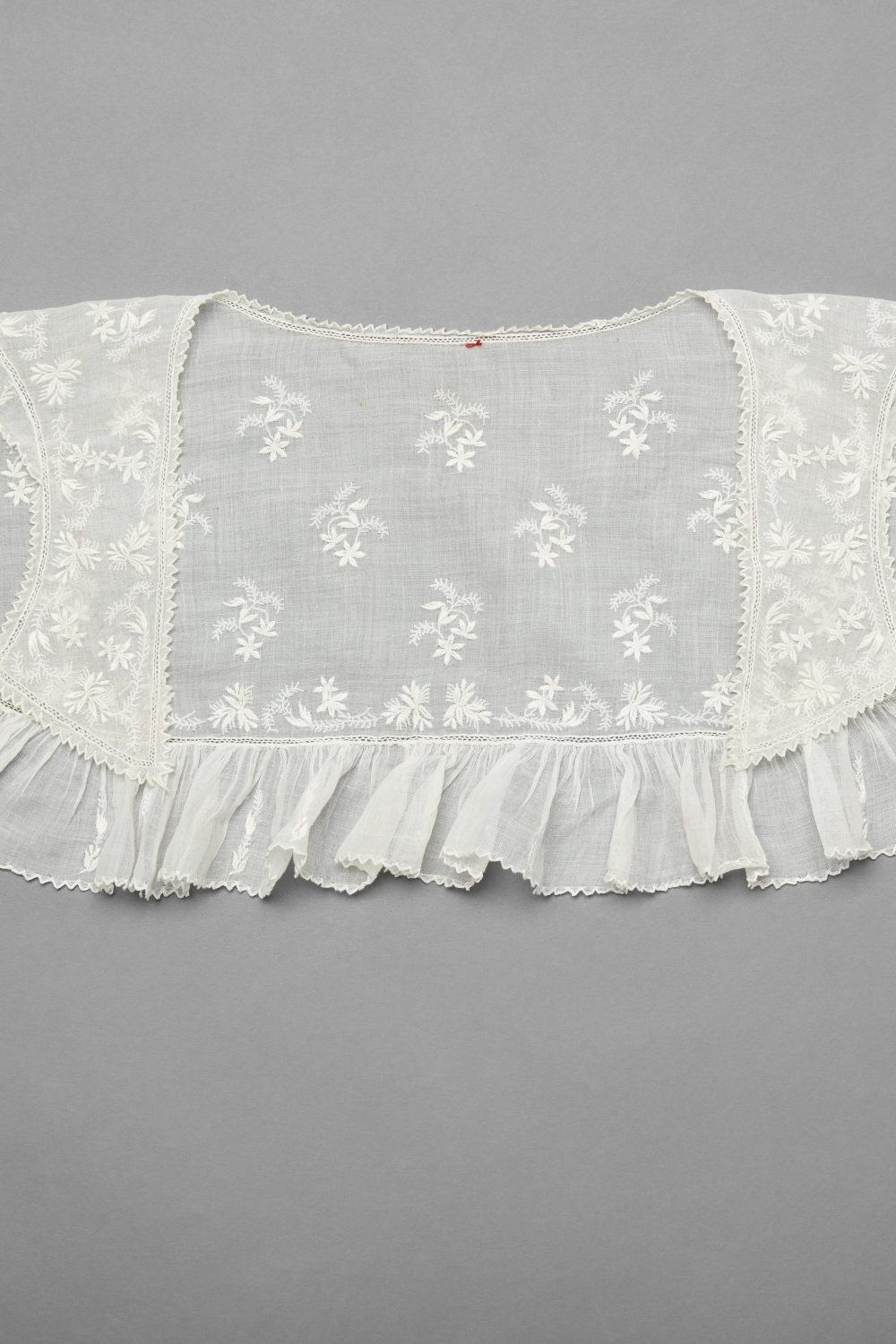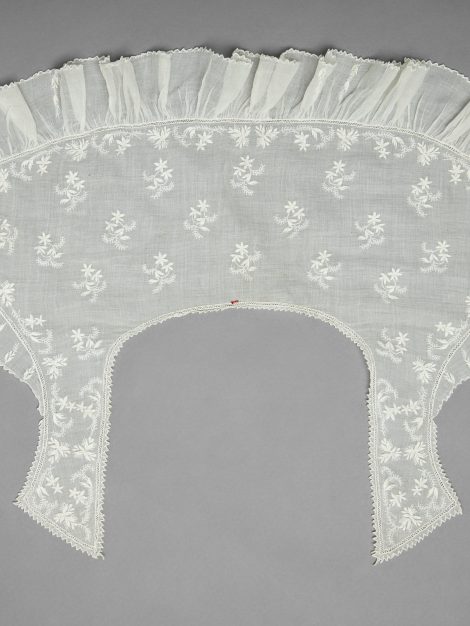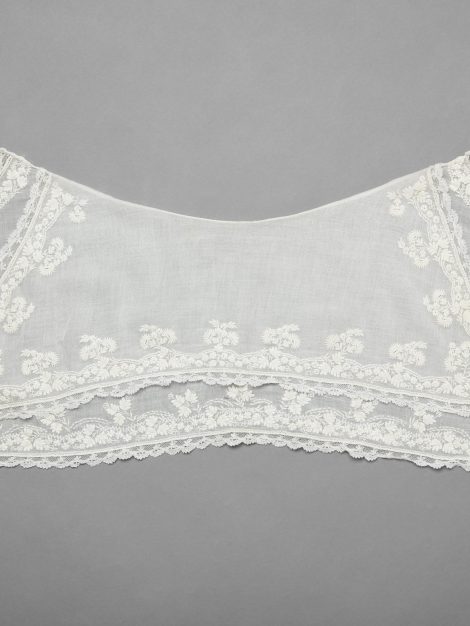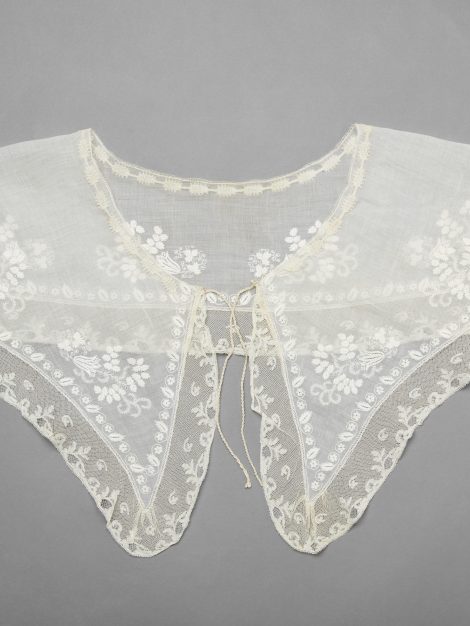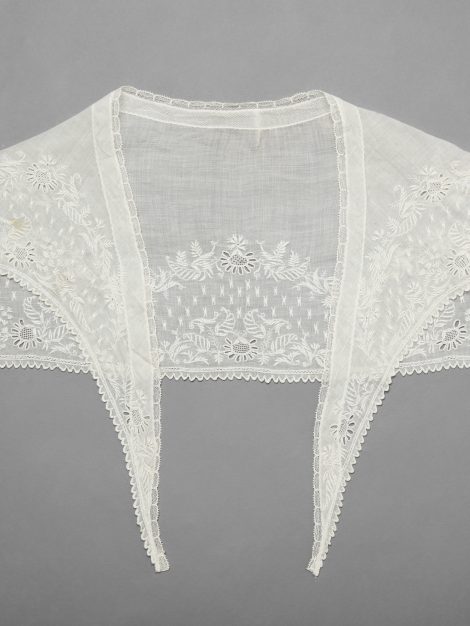The John Bright Collection owns a large number of items of white muslin neckwear embroidered with whitework motifs, mainly dating from the second quarter of the 19th Century. A selection has been photographed both flat, to indicate the overall shape, and folded as in wear. (See Related Items). The broad shoulder line of dresses from the mid 1820s to the mid 1830s, created by the expanding size of their sleeves, provided the perfect platform for large collars, or pelerines as they were called at the time, and many were illustrated in the fashion plates of the period. They were embroidered by both amateurs, as a hobby, and professionals, many of whom were outworkers whose work was sold to the public by milliners and merchants. Printed embroidery patterns, examples of which from the 1810s can be seen as a Related Item, continued to be published in women’s magazines such as Ackermann’s Repository and the Lady’s Magazine. These designs could be adapted to suit various shapes of collars as they were transferred to the fabric by means of tracing, pricking and pouncing, and interpreted in favoured stitches. Unsurprisingly, given the work involved in making them or the expense of buying them, collars were transferred from dress to dress, their versatility having the added advantage of making them easy to launder.
Like the two contemporary collars seen as Related Items, this example employs simple floral motifs within a related border design worked in stitches that would not test an amateur needlewoman. The design has been modified to fit in to the front extensions, known as lappets, and to form vertical stems of foliage around the bordering frill. The narrow band of open drawn thread work between the ground and the frill, and the buttonholed zig zag edging are ubiquitous features of whitework accessories. From the late 1820s the lappets grew in length, often caught beneath a belt, that style of collar becoming known as a ‘fichu pelerine’.
